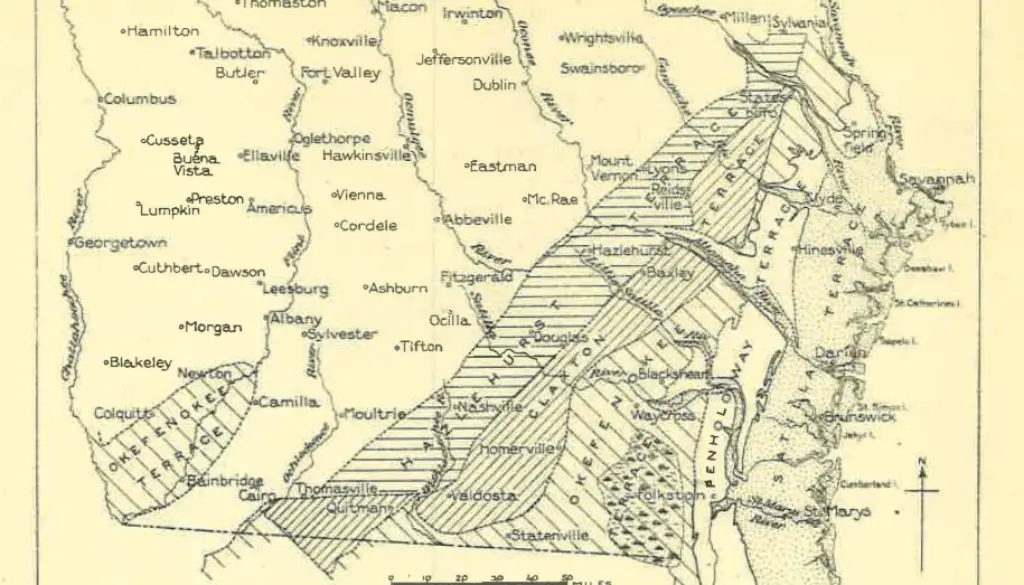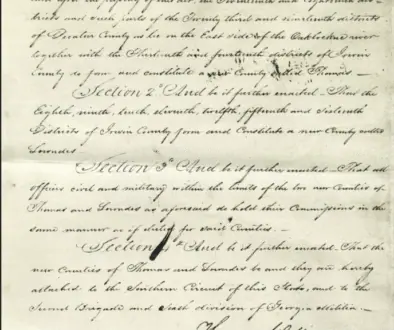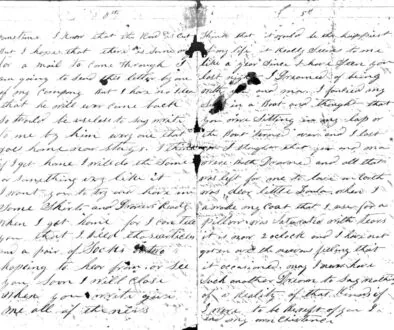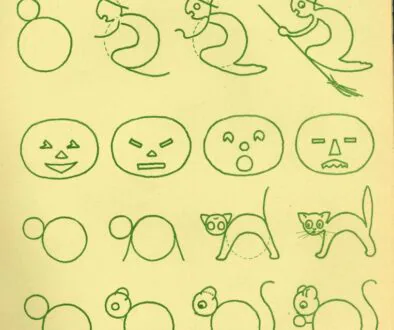Under the Sea
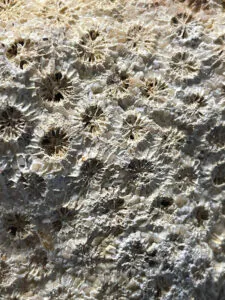 Have you ever wanted to own beachfront property? Well, if you own land in Thomas County or the surrounding area, congratulations! You are the proud owner of beachfront property!
Have you ever wanted to own beachfront property? Well, if you own land in Thomas County or the surrounding area, congratulations! You are the proud owner of beachfront property!
Or at least you would be if you had that property some 250 million years ago.
That was roughly the last time our area was underwater. Right around the transition from the Pliocene Epoch, a time 5.3 to 2.6 million years ago in which the climate was warmer and more tropical, to the Pleistocene Epoch, a time 2.58 million to 11,000 years ago also known as the “Ice Age,” our area was mostly submerged up to the Hazelhurst Terrace, an area that ran roughly from Cairo up to Sylvania, Georgia along the modern coastline. Slowly, the water began to recede as global temperatures dropped and water cooled into glaciers far north of our region. As this process went on, the receding water revealed islands, one of them located on what is now 319 along the state border. There’s a fun fact you can throw out the next time you pass the border on the way to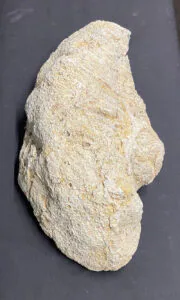 Tallahassee!
Tallahassee!
After a few more thousand or so years, the coastline receded to an area called the Okefenokee Terrace, revealing the land that would one day be known as Thomas County. It also revealed many of the rivers, lakes, and land formations of this area we’re familiar with today: the Ochloknee River, Lake Iamonia, Lake Lafayette, the basin of the Okefenokee Swamp, and the Cody Scarp, a terrace that is often used to mark the boundary of the Red Hills Region.
Here at the History Center, we have a memento from Thomas County’s underwater days. It measures to be roughly the length of a loaf of bread but tips the scales at a whopping eighteen pounds. This heaping hunk was found in Metcalfe, and if it isn’t impressive enough in its own right, it won first place in the fossil category at the 1991 Georgia State Fair. This sample of fossilized coral is called Solenastrea hyades or “Knobby Star Coral” for us laypeople. It dates to around the early Pleistocene Epoch, the last time this area was submerged under water.
If you would like to learn more about this specimen or view it in person, reach out to Meme at meme@thomascountyhistory.org.

